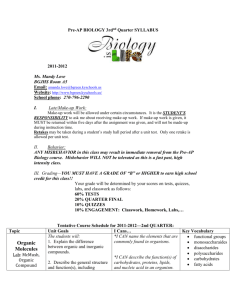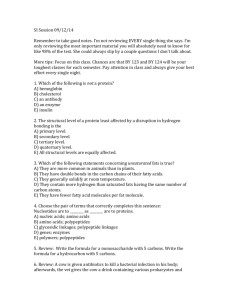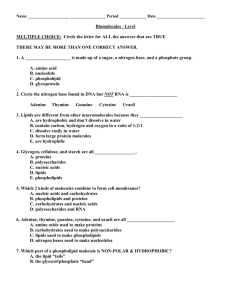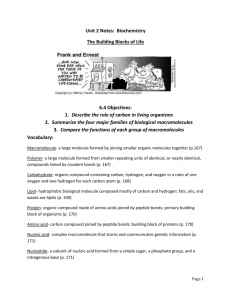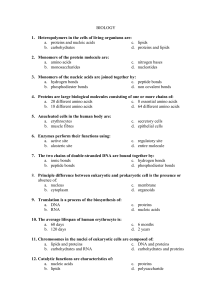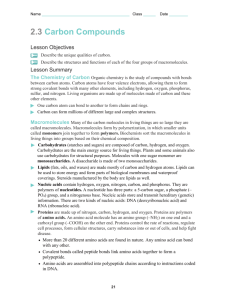reading quiz: ch.5.3-5.5
advertisement
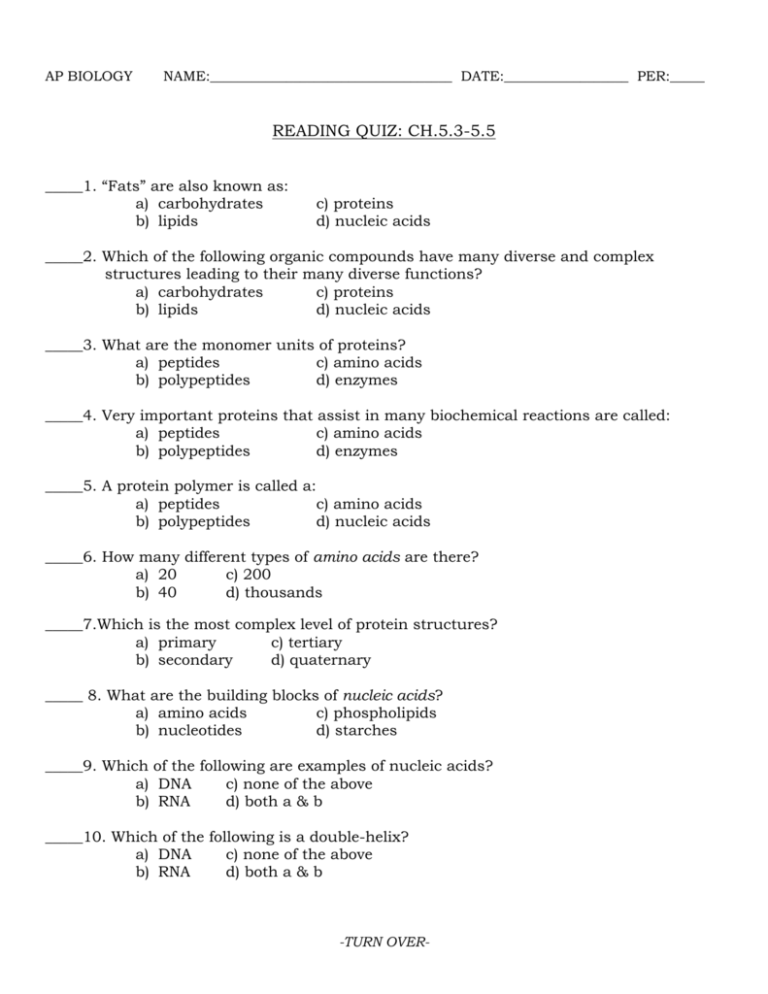
AP BIOLOGY NAME:___________________________________ DATE:__________________ PER:_____ READING QUIZ: CH.5.3-5.5 _____1. “Fats” are also known as: a) carbohydrates b) lipids c) proteins d) nucleic acids _____2. Which of the following organic compounds have many diverse and complex structures leading to their many diverse functions? a) carbohydrates c) proteins b) lipids d) nucleic acids _____3. What are the monomer units of proteins? a) peptides c) amino acids b) polypeptides d) enzymes _____4. Very important proteins that assist in many biochemical reactions are called: a) peptides c) amino acids b) polypeptides d) enzymes _____5. A protein polymer is called a: a) peptides c) amino acids b) polypeptides d) nucleic acids _____6. How many different types of amino acids are there? a) 20 c) 200 b) 40 d) thousands _____7.Which is the most complex level of protein structures? a) primary c) tertiary b) secondary d) quaternary _____ 8. What are the building blocks of nucleic acids? a) amino acids c) phospholipids b) nucleotides d) starches _____9. Which of the following are examples of nucleic acids? a) DNA c) none of the above b) RNA d) both a & b _____10. Which of the following is a double-helix? a) DNA c) none of the above b) RNA d) both a & b -TURN OVER- E.C. 11. Name the specific type of bonds that hold carbohydrate macromolecules together. ____________________________________ E.C. 12. Name the specific type of bonds that hold amino acid mononomers together to form protein polymers. ____________________________________ E.C. 13. Name the specific bonds that hold together the nucleic acid monomers in the double-helix structure. ____________________________________ E.C. 14. Name the specific type of bonds that can be found in the tertiary structures of proteins. ____________________________________




